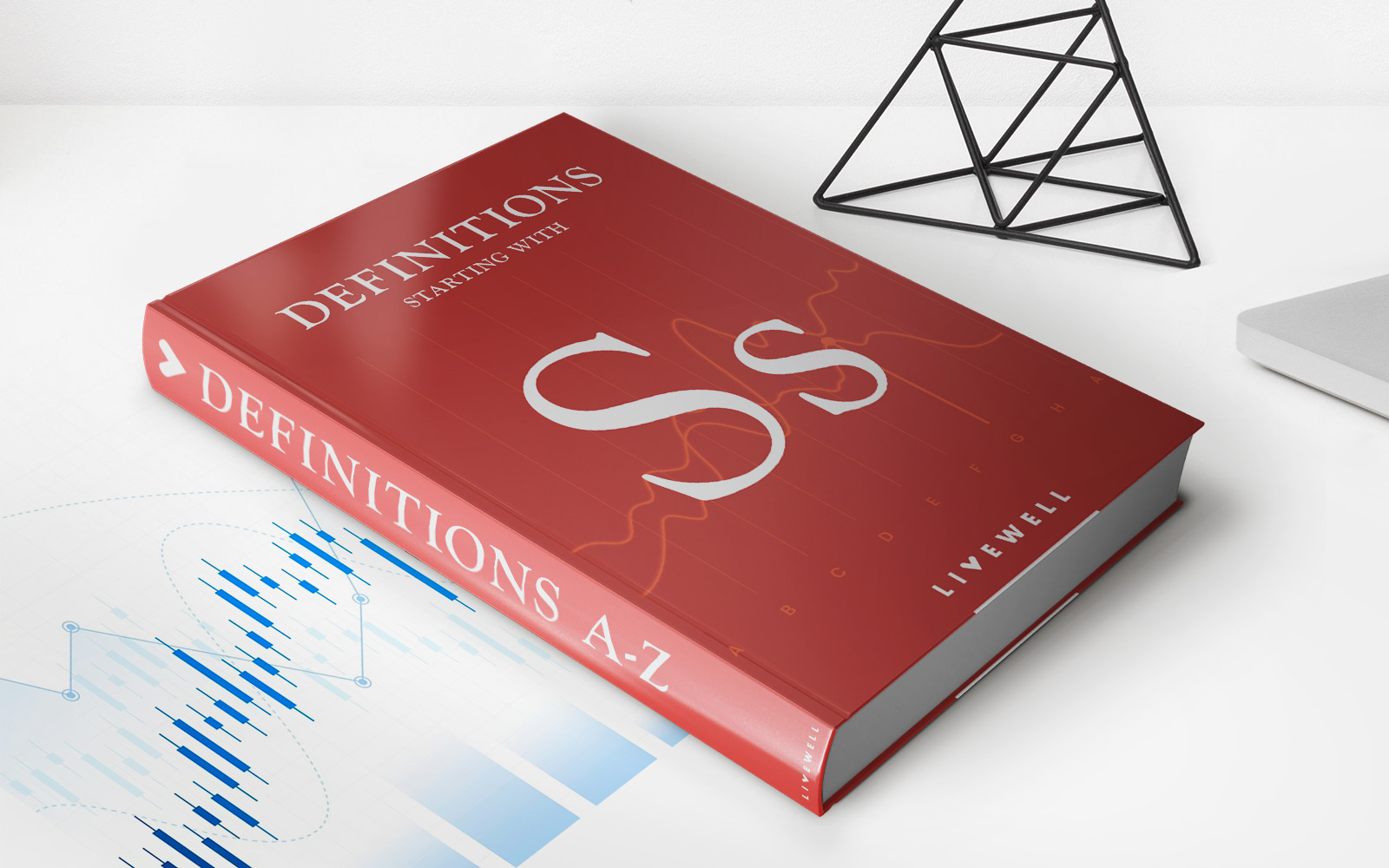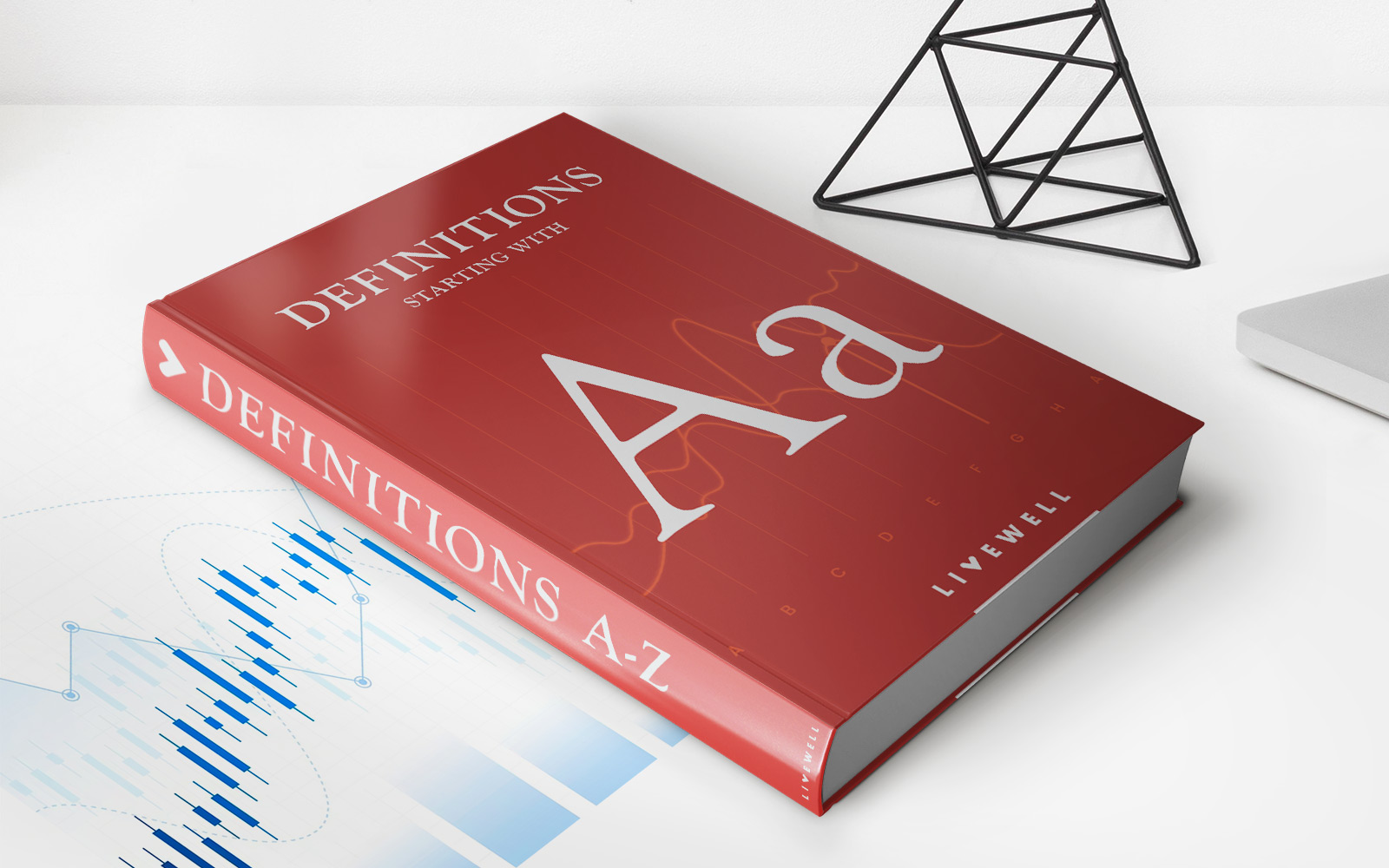

Finance
How To Calculate R&D Credit
Published: January 4, 2024
Learn how to calculate the R&D credit and maximize your finance benefits. Discover expert tips and strategies for claiming this tax incentive.
(Many of the links in this article redirect to a specific reviewed product. Your purchase of these products through affiliate links helps to generate commission for LiveWell, at no extra cost. Learn more)
Table of Contents
- Introduction
- Definition of R&D Credit
- Importance of R&D Credit
- Eligibility Criteria for R&D Credit
- Steps to Calculate R&D Credit
- Gathering Required Information
- Identifying Qualified Research Expenses (QREs)
- Calculating the Base Amount
- Calculating the Credit Amount
- Applying the Alternative Simplified Credit (ASC) Method
- Filing for R&D Credit
Introduction
Welcome to the world of research and development (R&D) tax credits! As a business owner or financial professional, understanding how to calculate and leverage R&D credits can be a game-changer for your bottom line. In this article, we’ll explore the ins and outs of R&D credits, including their definition, importance, eligibility criteria, and the step-by-step process to calculate them.
Research and development credits are a valuable incentive offered by governments around the world to encourage innovation and technological advancement. These credits provide financial benefits to businesses that invest in qualified research activities, allowing them to offset a portion of their research expenses and ultimately reduce their tax liability.
The significance of R&D credits cannot be overstated. They serve as a powerful tool for businesses to foster innovation, drive technological breakthroughs, and gain a competitive edge in the market. By reducing costs and increasing cash flow, R&D credits enable businesses to invest in further research and development, fueling growth and prosperity.
However, navigating the complexities of R&D credits can be daunting. One must meet specific eligibility criteria and follow a precise calculation methodology to determine the credit amount. This article aims to demystify the process and provide a step-by-step guide to calculating R&D credits.
To begin, we will discuss the eligibility criteria for R&D credits. Understanding whether your business qualifies for these incentives is crucial to determine if you can avail of the benefits. We will then proceed with an in-depth exploration of the steps involved in calculating R&D credits, including gathering the required information, identifying qualified research expenses (QREs), and determining the credit amount.
So, whether you’re a business owner looking to harness the power of R&D credits or a financial professional seeking to provide expert advice to your clients, read on to discover the secrets of calculating R&D credits and uncover new opportunities for financial growth and success.
Definition of R&D Credit
R&D credit, short for Research and Development credit, is a tax incentive provided by governments worldwide to incentivize businesses to invest in research and development activities. It is a way for governments to encourage innovation and promote economic growth. The R&D credit allows businesses to claim a portion of their qualified research expenses as a credit against their tax liability.
The definition of R&D credit may vary slightly depending on the jurisdiction, but the core concept remains the same. Generally, the credit applies to expenses incurred in conducting qualified research activities that aim to develop new products, processes, or technologies or improve existing ones.
The scope of qualified research expenses that can be included in the R&D credit calculation is broad and encompasses a wide range of expenses. These can include wages paid to employees directly engaged in research activities, amounts paid to third-party contractors for research work, cost of supplies and materials used in research, and certain overhead expenses related to research facilities.
R&D credits are a non-refundable tax credit, meaning that they can offset tax liability but cannot result in a cash refund if the credit exceeds the tax owed. However, there are certain instances where the credit can be carried forward or backward to future or prior tax years, providing additional flexibility to businesses.
It is essential to note that the criteria for qualifying research and the calculation methodology for the R&D credit can be complex and vary from jurisdiction to jurisdiction. In some cases, businesses may need to meet specific criteria such as having a research plan, documenting their research activities, or meeting a threshold of additional research expenditures.
The R&D credit is a powerful tool for businesses to reduce their tax burden and free up cash flow, enabling them to reinvest in further research and development initiatives. By providing a financial incentive for innovation, governments aim to foster technological advancements, enhance competitiveness, and drive economic growth.
In the next section, we will delve into the importance of R&D credits and explore how they can positively impact businesses and the economy as a whole.
Importance of R&D Credit
The importance of R&D credits cannot be overstated. They serve as a catalyst for innovation, driving economic growth and enhancing a business’s competitiveness in the market. Let’s explore the key reasons why R&D credits are vital:
-
Promoting Innovation: R&D credits incentivize businesses to invest in research and development activities, leading to the creation of new products, processes, and technologies. These innovations not only benefit the business implementing them but also contribute to advancements in various industries and sectors.
-
Competitive Advantage: Businesses that embrace R&D and leverage the available credits gain a competitive edge in the market. They can develop innovative solutions, meet evolving customer demands, and stay ahead of competitors. R&D credits enable businesses to allocate resources to research, helping them differentiate themselves and thrive in a dynamic business environment.
-
Job Creation and Economic Growth: R&D activities supported by the R&D credit often require skilled professionals, leading to the creation of specialized jobs. Increased investments in research and development translate into economic growth, generating employment opportunities and fostering a robust economy.
-
Industry Collaboration: R&D credits encourage collaboration between businesses, academic institutions, and research organizations. By offering financial incentives, governments promote partnerships and knowledge sharing, facilitating the exchange of ideas and expertise. This collaboration accelerates innovation and promotes cross-sector advancements.
-
Technological Advancements: R&D credits drive advancements in technology, pushing the boundaries of what is possible. This leads to breakthroughs in various fields, such as healthcare, energy, agriculture, and manufacturing. The resulting technological advancements not only benefit businesses but also improve the overall quality of life.
-
Tax Savings and Cash Flow: R&D credits provide businesses with the opportunity to offset a portion of their tax liability. This reduces their tax burden, allowing them to allocate those savings towards further research and development initiatives. The enhanced cash flow enables businesses to invest in equipment, talent, and infrastructure needed to drive innovation.
The importance of R&D credits goes beyond individual businesses. They contribute to the overall progress of societies, foster collaboration, and position countries as leaders in innovation. By incentivizing businesses to invest in research and development, governments create a supportive ecosystem for growth, ensuring a prosperous future for both businesses and the economy as a whole.
Next, we will dive into the eligibility criteria for R&D credits, outlining what businesses need to qualify for these valuable incentives.
Eligibility Criteria for R&D Credit
While R&D credits provide a valuable incentive for businesses to invest in research and development activities, not all companies may be eligible to claim these credits. Understanding the eligibility criteria is crucial to determine if your business qualifies for R&D credits. Here are some key factors to consider:
-
Qualified Research Activities: To be eligible for R&D credits, your business must engage in qualified research activities. These activities typically involve the development of new products, processes, or technologies or improvements to existing ones through the application of scientific principles. Examples can include conducting experiments, developing prototypes, and performing technical analysis.
-
Technological Uncertainty: Qualified research activities must also involve technological uncertainty. This means that at the start of the research project, the outcome or methodology is uncertain and must be evaluated through a systematic process. The research must aim to eliminate this uncertainty through experimentation or analysis.
-
Substantially All Test: Some jurisdictions require that businesses meet a “substantially all” test, which means that a significant portion of the activities must be qualified research. The threshold for what constitutes “substantially all” may vary, but it generally ranges from 80% to 90% of the total research activities.
-
Documentation and Record-Keeping: To claim R&D credits, businesses must maintain detailed documentation and records that support their research activities. This can include project plans, records of experimental activities, technical specifications, and supporting documents that demonstrate the technological uncertainties faced during the research process.
-
Financial Capacity: While not a strict eligibility criterion, businesses must have a tax liability or taxable income to benefit from R&D credits. The credits can offset tax liabilities, reducing a company’s tax burden or providing carryforward or carryback options to use the credits against future or prior tax years.
It’s important to note that the eligibility criteria for R&D credits may differ among jurisdictions. Each government has its own set of rules and regulations regarding what qualifies as eligible research activities and expenses. Therefore, it’s advisable to consult with tax experts or finance professionals who specialize in R&D credits to ensure that you meet all the necessary criteria for claiming these valuable incentives.
Now that we have a clear understanding of the eligibility criteria for R&D credits, let’s move on to the step-by-step process of calculating these credits.
Steps to Calculate R&D Credit
Calculating the R&D credit requires a systematic approach that involves gathering the necessary information, identifying qualified research expenses (QREs), and applying the appropriate calculation methodology. Here are the key steps to follow when calculating the R&D credit:
-
Gather Required Information: To calculate the R&D credit accurately, you’ll need to collect relevant information related to your research and development activities. This includes documentation of qualified research expenses, payroll records of employees involved in research, contracts with third-party contractors, and any other supporting documents required by tax authorities.
-
Identify Qualified Research Expenses (QREs): Review your research and development expenses to determine which ones qualify for the R&D credit. QREs typically include wages paid to employees directly engaged in research activities, costs of materials used in research, and contract research expenses. It’s important to carefully review guidelines and regulations to ensure that the expenses meet the qualifying criteria.
-
Calculate the Base Amount: The base amount is an integral part of the R&D credit calculation. It is typically determined by using one of the approved methods, such as the Traditional Method or the Alternative Simplified Credit (ASC) Method. The base amount represents a baseline against which the credit is calculated.
-
Calculate the Credit Amount: Once the base amount is determined, you can calculate the R&D credit amount. The credit is generally a percentage of the qualified research expenses that exceed the base amount. The percentage may vary depending on the jurisdiction and the specific rules in place. It is important to consult the relevant tax regulations to determine the applicable credit rate.
-
Applying the Alternative Simplified Credit (ASC) Method: In some jurisdictions, businesses have the option to use the Alternative Simplified Credit (ASC) Method to calculate their R&D credit. This method simplifies the calculation process by applying a fixed percentage to the QREs. However, eligibility criteria and limitations may apply, so it’s essential to understand the specific rules and regulations of your jurisdiction.
-
Filing for R&D Credit: Once you have determined the credit amount, you can apply it to offset your tax liability. Include the R&D credit information in your tax return and follow the proper filing procedures outlined by the tax authorities in your jurisdiction. It’s recommended to consult with tax professionals or specialists to ensure accurate reporting.
Calculating the R&D credit may involve complex calculations and adherence to specific guidelines, depending on your jurisdiction. It is crucial to understand the specific rules and regulations relevant to your business and seek professional advice when necessary.
Now that we have explored the steps involved in calculating the R&D credit, let’s move on to the essential aspect of gathering the required information for the calculation process.
Gathering Required Information
Gathering the necessary information is a crucial step in accurately calculating the R&D credit. This information will serve as the foundation for identifying qualified research expenses (QREs) and determining the credit amount. Here are the key pieces of information you need to gather:
-
Research and Development Activities: Compile detailed documentation of the research and development activities your business has undertaken. This includes project plans, research reports, experiment records, and any other relevant documentation that outlines the nature and scope of the research activities.
-
Employee Records: Gather payroll records and time logs for employees directly involved in qualified research activities. This information will help in determining the portion of their wages that can be included as QREs.
-
Contractor Agreements: If you’ve outsourced any research-related work to third-party contractors, collect copies of the contracts or agreements. These documents will outline the research services provided, the fees paid, and the qualification of these expenses as QREs.
-
Purchase and Expense Records: Keep track of all purchases and expenses related to research and development. This includes invoices, receipts, and other supporting documents for the cost of materials, supplies, and equipment used in the research process. These expenses may qualify as QREs.
-
Documentation of Technological Uncertainty: Document instances of technological uncertainty that your business encountered during the research process. This could include records of failed experiments, technical challenges, or uncertainties that needed to be resolved to achieve desired outcomes. These records support your claim for qualified research activities.
-
Tax Returns and Financial Statements: Review previous tax returns and financial statements to gather relevant financial data. This information will help calculate the R&D credit using the appropriate base amount calculation method based on jurisdiction-specific rules.
It is essential to maintain organized and accessible records throughout the research and development process. Accurate and comprehensive documentation is crucial for substantiating your R&D credit claim and providing support in case of an audit or review by tax authorities.
By diligently gathering the required information, you will be better equipped to identify qualified research expenses, calculate the credit amount, and ensure compliance with the tax regulations in your jurisdiction. The next step will focus on identifying qualified research expenses (QREs) and understanding their significance in calculating the R&D credit.
Identifying Qualified Research Expenses (QREs)
Identifying qualified research expenses (QREs) is crucial when calculating the research and development (R&D) credit. QREs are the specific expenses incurred during qualified research activities that are eligible for the credit. Properly identifying and documenting these expenses is essential for an accurate credit calculation. Here are some key points to consider when identifying QREs:
-
Wages: Employee wages directly attributable to qualified research activities are typically considered QREs. This includes salaries, hourly wages, bonuses, and certain employee benefits. It’s important to distinguish between employees who are directly involved in the research and those who provide indirect support or administrative functions.
-
Supplies and Materials: Costs related to materials and supplies used in research activities may qualify as QREs. This includes the cost of raw materials, prototypes, test materials, laboratory supplies, and other consumables specifically used in the research process.
-
Contract Research: If your business has engaged third-party contractors or consultants to perform research activities on your behalf, the fees paid to them may be considered QREs. Ensure that the contracted work meets the criteria for qualified research as outlined by the tax regulations in your jurisdiction.
-
Computer Software: Expenses for computer software used in qualified research activities may qualify as QREs. This includes the cost of software licenses, development tools, and software used exclusively for research purposes.
-
Rent and Utilities: Certain overhead expenses incurred during research activities can be considered QREs. This may include a portion of rent, utilities, and other facility-related costs directly associated with the research process. Ensure that these expenses are adequately documented and can be clearly linked to the qualified research activities.
-
Outside Research: Expenses incurred for outside research conducted by universities, research institutions, or similar entities may be eligible for inclusion as QREs. Ensure that these expenses meet the criteria of qualified research as outlined by the tax regulations in your jurisdiction.
It’s important to keep thorough records and documentation of each QRE. Maintain detailed records of the expenses, including invoices, receipts, and any supporting documents that provide evidence of the nature and purpose of the expense.
Remember, the specific guidelines for identifying QREs may vary depending on your jurisdiction. It’s crucial to consult the tax regulations, guidelines, and any relevant interpretations provided by tax authorities to ensure accurate identification and classification of QREs.
With a clear understanding of qualified research expenses, we can now proceed to the important step of calculating the base amount for the R&D credit.
Calculating the Base Amount
Calculating the base amount is a crucial step in determining the research and development (R&D) credit. The base amount serves as a benchmark against which the credit is calculated. The method for calculating the base amount may vary based on jurisdiction-specific rules and regulations. Here are some key points to consider when calculating the base amount:
-
Traditional Method: The Traditional Method is one approach to calculate the base amount. This method typically considers a fixed percentage of a business’s average annual gross receipts from the four preceding tax years. The percentage can vary depending on the jurisdiction and the specific rules in place.
-
Alternative Simplified Credit (ASC) Method: Some jurisdictions offer the Alternative Simplified Credit (ASC) Method as an option to calculate the base amount. This method simplifies the calculation by applying a fixed percentage to the qualified research expenses (QREs) that exceed a certain base amount. The percentage and the base amount can vary based on the jurisdiction’s regulations.
-
Start-Up Companies: Start-up companies or businesses with no prior tax years may have specific provisions for calculating the base amount. Special rules may apply to determine the appropriate base amount in these cases. It’s important to consult the tax regulations and guidelines for the specific rules that apply to start-up companies.
-
Jurisdiction-Specific Rules: Each jurisdiction may have its own rules, regulations, and methodologies for calculating the base amount for the R&D credit. It’s crucial to consult the tax laws and guidelines provided by the relevant tax authorities in your jurisdiction to ensure accurate calculation.
When calculating the base amount, it’s important to gather the necessary financial information, including tax returns, financial statements, and other relevant documents. These records will serve as a basis for determining the average annual gross receipts or other criteria required to calculate the base amount for the R&D credit.
Remember to consult professionals with expertise in R&D tax credits or tax advisors who are familiar with the specific rules in your jurisdiction. They can provide guidance and ensure accurate calculation of the base amount for the R&D credit.
With the base amount calculated, we can now move on to determining the credit amount, which is the next crucial step in the R&D credit calculation process.
Calculating the Credit Amount
Calculating the credit amount is a critical step in determining the research and development (R&D) credit. The credit amount represents the value that a business can claim as a credit against its tax liability. The calculation methodology may vary based on jurisdiction-specific rules and regulations. Here are some key considerations when calculating the credit amount:
-
Qualified Research Expenses (QREs): The credit amount is typically a percentage of the qualified research expenses (QREs) that exceed the base amount. QREs include expenses directly related to qualified research activities, such as wages, supplies, and contract research costs. It’s important to identify and compile these expenses accurately.
-
Tax Credit Rate: The tax credit rate is the percentage applied to the qualifying expenses to determine the credit amount. The rate may vary depending on the jurisdiction and the specific rules in place. It’s essential to consult the tax regulations to determine the applicable tax credit rate for your business.
-
Alternative Simplified Credit (ASC) Method: In some jurisdictions, businesses have the option to use the Alternative Simplified Credit (ASC) method, which provides a simplified calculation methodology based on a fixed percentage of qualifying expenses that exceed a base amount. Ensure you understand the requirements and limitations associated with using the ASC method.
-
Carryforward or Carryback: In cases where the credit amount exceeds the tax liability, businesses may have the option to carry the excess credit forward to future tax years or backward to prior tax years. This can provide flexibility for utilizing the credit effectively. Be aware of the specific rules and limitations surrounding carryforward or carryback provisions.
To calculate the credit amount, you’ll need to gather and accurately document the QREs. Keep in mind that the credit amount cannot exceed the qualified research expenses that exceed the base amount. It’s crucial to maintain detailed records of expenses and consult the tax regulations to ensure compliance with the calculation methodology in your jurisdiction.
Professional assistance from tax advisors or experts specializing in R&D tax credits can be beneficial when determining the credit amount. They can help ensure accurate calculations and provide guidance on eligible expenses, tax credit rates, and any jurisdiction-specific regulations that may apply.
Once the credit amount is determined, it can be used to offset the tax liability of your business. Including the credit information in your tax return and following the proper filing procedures outlined by the tax authorities in your jurisdiction is the final step for properly claiming the R&D credit.
In the next section, we will discuss the option of applying the Alternative Simplified Credit (ASC) method and its benefits.
Applying the Alternative Simplified Credit (ASC) Method
The Alternative Simplified Credit (ASC) method provides a simplified approach to calculating the research and development (R&D) credit. This method is available in certain jurisdictions as an alternative to the traditional calculation methodology. Applying the ASC method can offer several benefits and streamline the credit calculation process. Here are some important points to consider when using the ASC method:
-
Simplified Calculation: The ASC method simplifies the calculation process by applying a fixed percentage to the qualified research expenses (QREs) that exceed a certain base amount. This eliminates the need for complex base amount calculations, making the credit calculation more straightforward and accessible for businesses.
-
Fixed Percentage: The ASC method typically applies a fixed percentage to the QREs instead of using the traditional base amount calculation. The specific percentage may vary depending on the jurisdiction and the applicable regulations. It’s important to consult the tax authorities or guidelines to determine the precise fixed percentage for your business.
-
Limited Adjustments: Under the ASC method, there are usually limited adjustments required for qualified research expenses. This reduces the complexity and administrative burden of determining the credit amount. It provides a more streamlined process for businesses to calculate and claim their R&D credits.
-
Eligibility and Limitations: While the ASC method offers simplicity, there may be certain eligibility criteria and limitations associated with its use. These could include factors such as a minimum threshold for QREs or restrictions on the level of credit that can be claimed. It’s crucial to understand the specific rules and regulations pertaining to the ASC method in your jurisdiction.
When considering the ASC method, it’s important to weigh the advantages of simplified calculations against any potential limitations. For some businesses, the ASC method may be a more efficient and straightforward option. However, in other cases, the traditional method may still be more suitable, particularly if the business has significant QREs or if the tax credit rate under the traditional method is more favorable.
Consulting with tax advisors or experts specializing in R&D tax credits is recommended to determine the most appropriate calculation method for your business. They can provide guidance on the eligibility, limitations, and potential benefits associated with the ASC method.
Once the selected calculation method, whether it’s the ASC method or the traditional method, is applied, you can determine the credit amount to be used in offsetting your tax liability. The final step is to ensure proper filing of the R&D credit claim, as per the regulations and procedures outlined by the tax authorities in your jurisdiction.
Now that we have covered the steps to calculate the R&D credit and explored the ASC method, let’s move on to the process of filing for the R&D credit.
Filing for R&D Credit
Once you have calculated the research and development (R&D) credit amount, the final step is to properly file for the credit. Filing for the R&D credit involves following the regulations and procedures outlined by the tax authorities in your jurisdiction. Here are some key points to consider when filing for the R&D credit:
-
Complete and Accurate Documentation: Ensure that you have all the necessary documentation and records to support your R&D credit claim. This includes documentation of qualified research activities, qualified research expenses (QREs), calculations, and any other supporting evidence as required by the tax authorities.
-
Properly Complete Tax Forms: Review the specific tax forms and schedules required to claim the R&D credit in your jurisdiction. Make sure to accurately complete all the necessary sections and provide the requested information. Incorrect or incomplete filing can result in delays or potential audit risk.
-
Attach Supporting Documentation: In many cases, you will need to attach supporting documentation to your tax return to substantiate your claim for the R&D credit. This can include project plans, research reports, expense receipts, contracts, and any other relevant documentation. Ensure that you include all the required supporting documents as specified by the tax authorities.
-
Comply with Filing Deadlines: Be aware of the specific deadlines for filing your tax return and claiming the R&D credit. Missing the deadlines can result in penalties or the loss of the opportunity to claim the credit for that particular tax year. Stay informed about the filing deadlines and make sure to submit your tax return and R&D credit claim on time.
-
Seek Professional Assistance: Consider consulting with tax professionals or experts specializing in R&D tax credits. They can provide expert advice, review your documentation, and ensure accurate filing of your R&D credit claim. Their expertise can help you navigate through the complexities of the tax regulations and maximize the benefits of the R&D credit.
It’s crucial to carefully review the guidelines and specific requirements provided by the tax authorities in your jurisdiction. Each jurisdiction may have its own rules and regulations regarding the filing process for the R&D credit. Following these guidelines will help ensure a smooth and proper filing of your R&D credit claim.
Remember to keep copies of all filed documents and supporting records for your records. These copies will serve as your documentation in case of an audit or review by tax authorities.
By properly filing for the R&D credit and complying with the relevant regulations, you can benefit from the financial incentives provided by governments and support the growth and innovation of your business.
Now that we have covered the process of filing for the R&D credit, let’s conclude our journey through understanding and calculating R&D credits.














